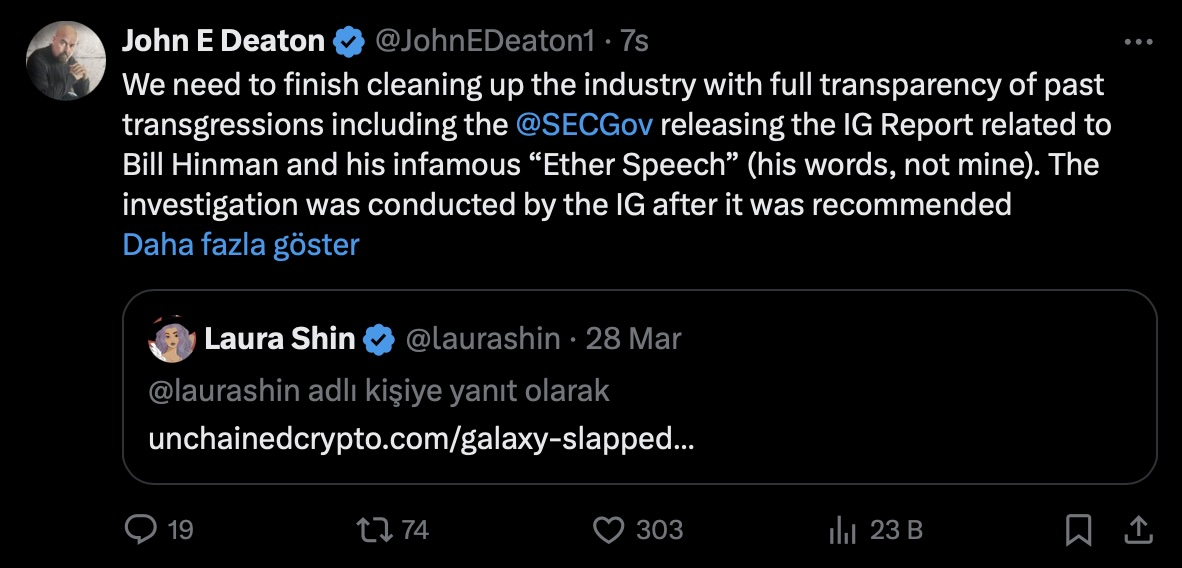Discussions regarding the past practices of the U.S. Securities and Exchange Commission (SEC) have reignited. Attorney John Deaton has requested the public release of an investigative report related to former SEC official William Hinman’s 2018 speech on Ethereum  $2,077. It is suggested that this report, prepared by the internal audit unit, could reveal whether the SEC acted impartially in its decision-making processes. As calls for transparency grow in the cryptocurrency sector, the focus shifts to the SEC’s leadership.
$2,077. It is suggested that this report, prepared by the internal audit unit, could reveal whether the SEC acted impartially in its decision-making processes. As calls for transparency grow in the cryptocurrency sector, the focus shifts to the SEC’s leadership.
Hinman’s Speech Back in the Spotlight
In his 2018 speech, William Hinman stated that Ethereum is not a security, making it a focal point of ongoing debates. John Deaton claims that the results of the review conducted by the Office of the Inspector General have been kept confidential. According to Deaton, the disclosure of the report is critical for testing whether the SEC has been fair in its regulatory policies.

Following Hinman’s speech, Ethereum’s price surged, creating significant waves in the cryptocurrency market. However, this rise also brought allegations of conflicts of interest. Deaton emphasized that the report’s public release is not merely a legal issue but also a matter of public responsibility.
Deaton highlights that understanding the criteria the SEC previously used to intervene in projects is vital for future regulations. The inconsistency in the standards applied by the SEC to various projects has eroded the confidence of cryptocurrency investors. He criticized the agency’s silence by questioning, “If there is neutrality, why is this report still being hidden?”
The potential disclosure of the report could reveal not only the background of Hinman’s speech but also how the SEC’s internal audit mechanism operates. This could be an opportunity for the agency to reassess its practices and prevent similar debates in the future. The SEC’s approach to transparency could reshape players’ trust in the cryptocurrency market.
A Test for the New SEC Leadership
Deaton’s call presents a significant test for new SEC Chairman Paul Atkins and other senior officials. The retreat from certain lawsuits initiated in previous years and changes in regulatory approaches suggest a shift toward a more accountable structure. However, the sincerity of this transition will be tested through the documents requested by the public.
Moreover, the SEC’s lack of any commentary regarding the report has raised questions in the public sphere. Understanding how the internal audit and evaluation processes function and the extent of influence is crucial not only for experts but also for investors. Deaton’s statements remind us that these issues should be discussed openly, not just in courtrooms.

 Türkçe
Türkçe Español
Español









